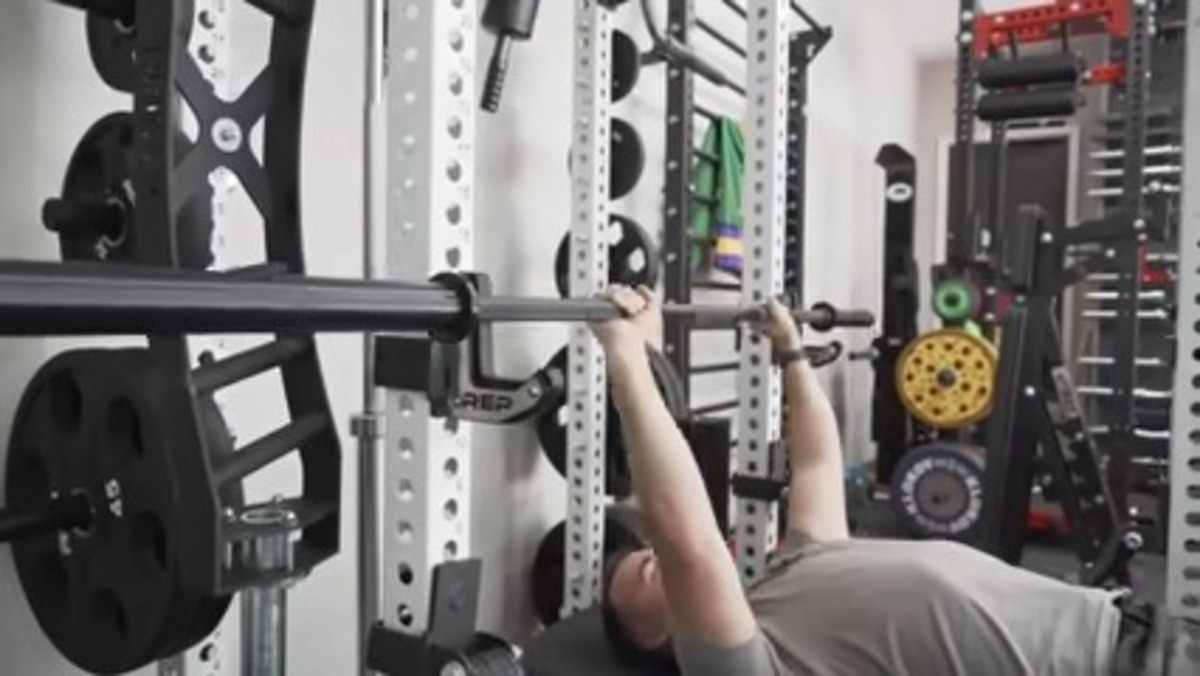Affiliate Disclosure: We may earn money or products from the companies mentioned in this post.
A garage gym is a great place to start your fitness journey. You can get in a full workout and train at home while avoiding the long lines and expensive fees of a commercial gym.
However, you don’t need an expensive home gym immediately.
9 of the Best Starter Equipment for Garage Gym and Examples
Whether you’re just starting or looking to enhance your existing setup, I’ll walk you through the must-have gear that will kickstart your garage gym and set you on the path to fitness success.
1. A quality barbell

The barbell is the most important piece of equipment for your garage gym. It’s the only thing that will allow you to perform the big lifts like squats, deadlifts, and presses.
There are three types of barbells: standard Olympic, power, and fat bars. The first two can be used interchangeably with each other but not with the latter because they have different weights and sizes on each end of them; you don’t want to drop a 100-pound dumbbell on your toe.
A good general rule when buying an Olympic or power lift bar is that it should be no shorter than 7 feet long so that there is enough room between yourself and any potential injury from hitting something during an exercise like cleans or snatches. It should also weigh at least 45 pounds if possible because anything lighter won’t be stable when lifting heavy weights off of it.
However, if money isn’t an issue, go ahead and get one up past 50 pounds since this will allow more leeway when it comes time for heavier lifts such as squats or bench presses later down the line, remember though not all gyms allow these types due their costliness.
You’ll also want to buy some collars to track how much weight has been added onto each side without having them fall off mid-set which could lead to serious injury. These come in handy, especially if using bumper plates over metal ones since they won’t scratch up surfaces like wood floors while still protecting against slipping off unexpectedly.
2. Dumbbells
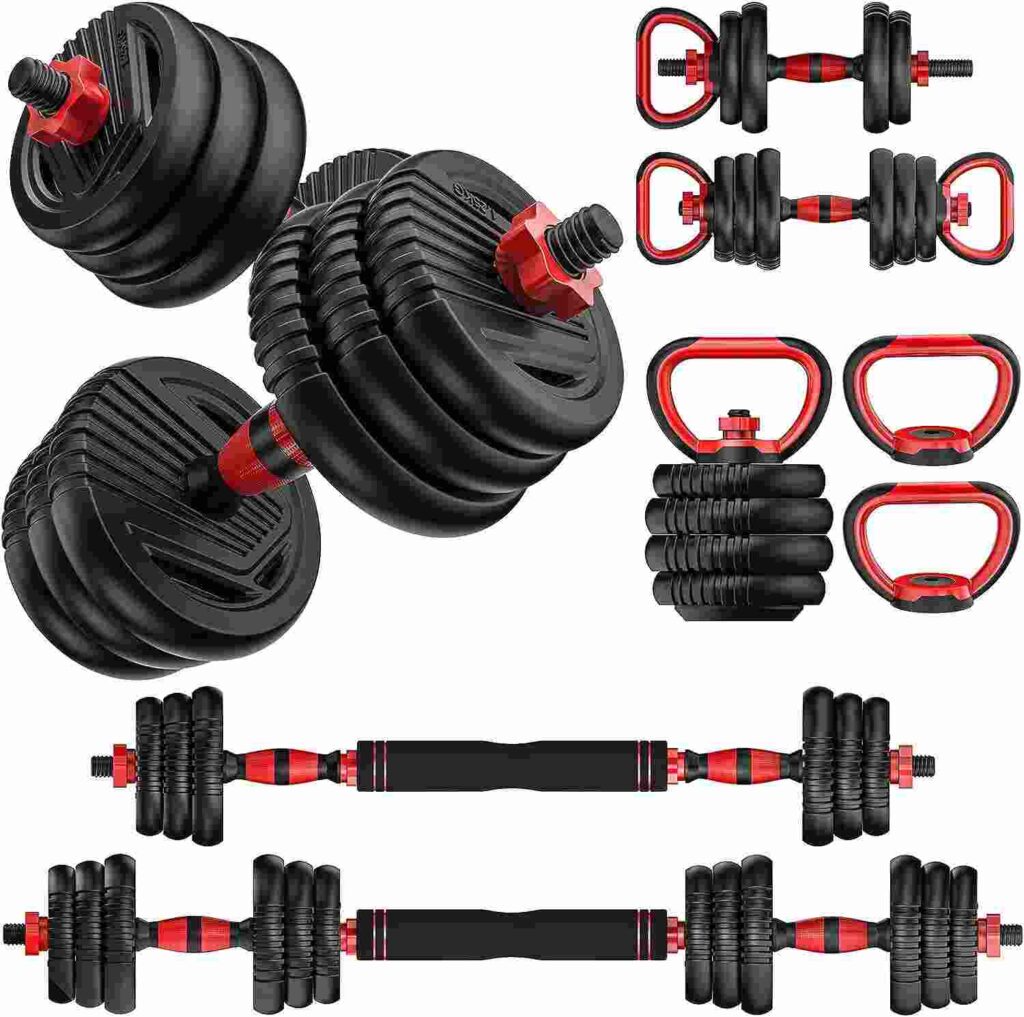
Dumbbells are one of the most versatile pieces of equipment in a garage gym. You can use them to work for each muscle group differently than barbells, which is great for building muscle mass and strength. For example, if you’re doing an exercise involving curling dumbbells, you can focus more on your biceps than using a barbell with weight plates on either side.
Dumbbells are also great because they allow you to add weight to an exercise using two or three weights at once. For example, suppose you want to increase the difficulty level of a push-up by adding some extra resistance, such as holding onto two heavy dumbbells. In that case, this will ensure that every aspect of your body gets stronger over time.
3. Kettlebells
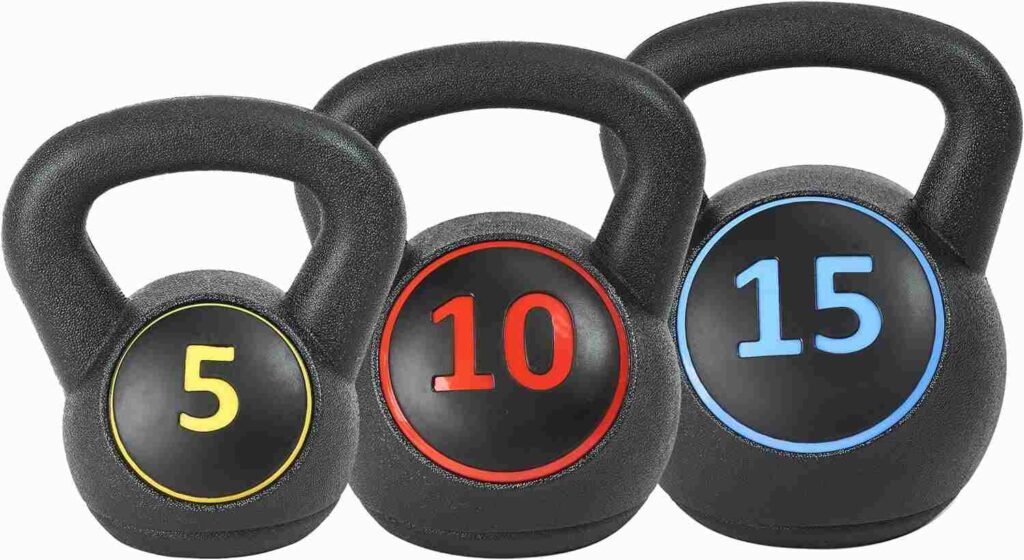
Kettlebells are a great addition to any home gym. Kettlebells can be used for many different exercises, like squats and presses. They’re also great for building strength and cardio. If you’re looking for something lightweight that won’t take up much space in your garage gym, kettlebells are an excellent choice.
Who Should Use Kettlebells? Kettlebells are great for people looking to build strength and cardio. They’re also a good option for anyone who wants to get fit but lacks space in their home gym.
4. Olympic weight plates

Olympic weight plates are a must-have for serious lifters. They’re larger than their standard counterpart, so they can be loaded with more weight and offer better stability.
Olympic plates have a 2.5-inch diameter and are made from cast iron, meaning they’re extremely durable and can take some abuse in the gym. They also feature larger holes than standard plates (1 inch versus 1 1/2 inches), which help keep the weight from wiggling around on your barbell when you lift it off the ground, a problem that can lead to injury if not corrected quickly enough.
The main purpose of Olympic bars and collars is to create an even surface where all of your weights will sit securely without moving around during lifts like squats or deadlifts; however, these accessories won’t work well if they aren’t secured properly inside their respective places first, and this is where collars come into play.
Furthermore, Collars act as locking mechanisms between two pieces while still providing grip security, so nothing gets loose during heavy lifts like squats or deadlifts.
5. Bench press and squat rack
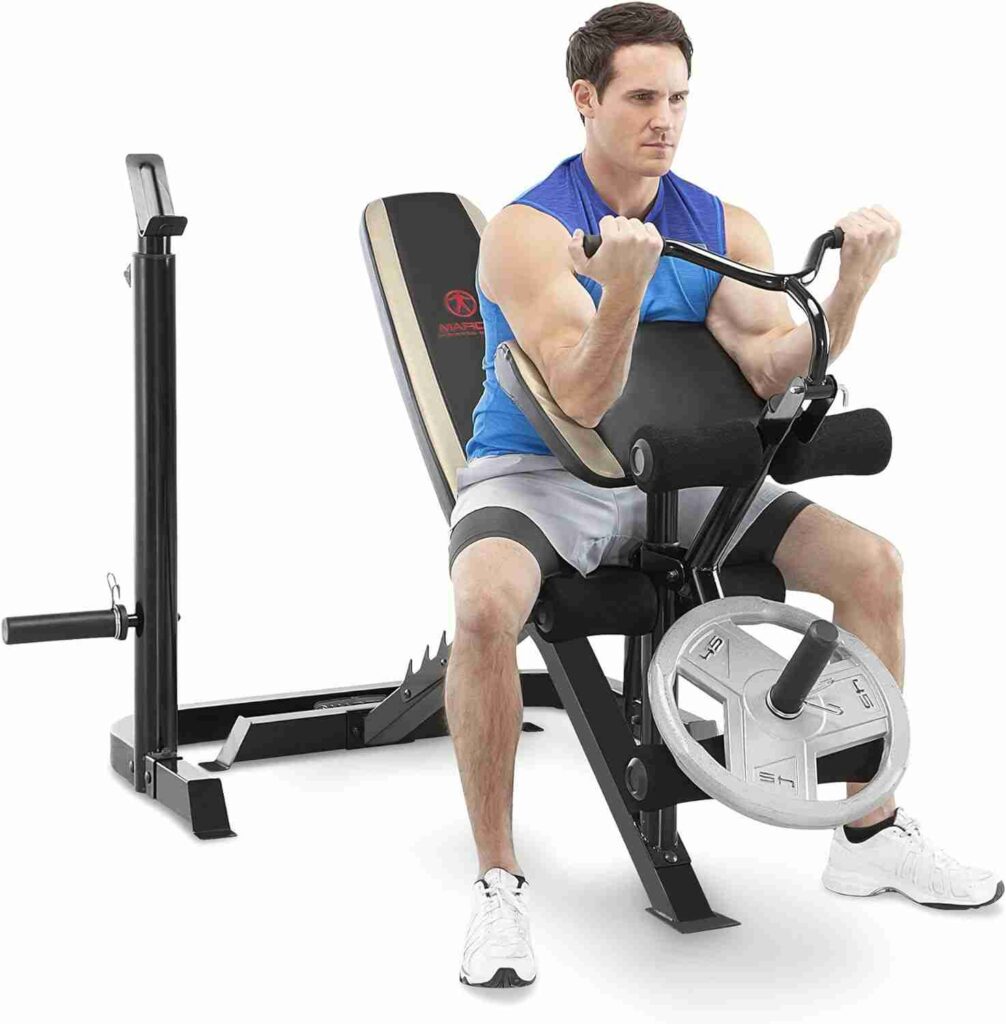
Bench presses and squat racks are essential for any home gym. They are the two most basic exercises you will do in your garage gym, and they can be done with free weights or machines. If you want to get stronger, build muscle and lose weight, these two pieces of equipment are necessary.
A good bench press/squat rack combo will cost between $300-$500, depending on your needed storage space; many people buy extra barbell plate storage racks. You can get an even better deal if you buy used or refurbished ones from Craigslist or eBay, but make sure they’re still in good condition before purchasing them.
If you’re on a budget, there are many other ways to work without equipment.
6. Power rack or cage
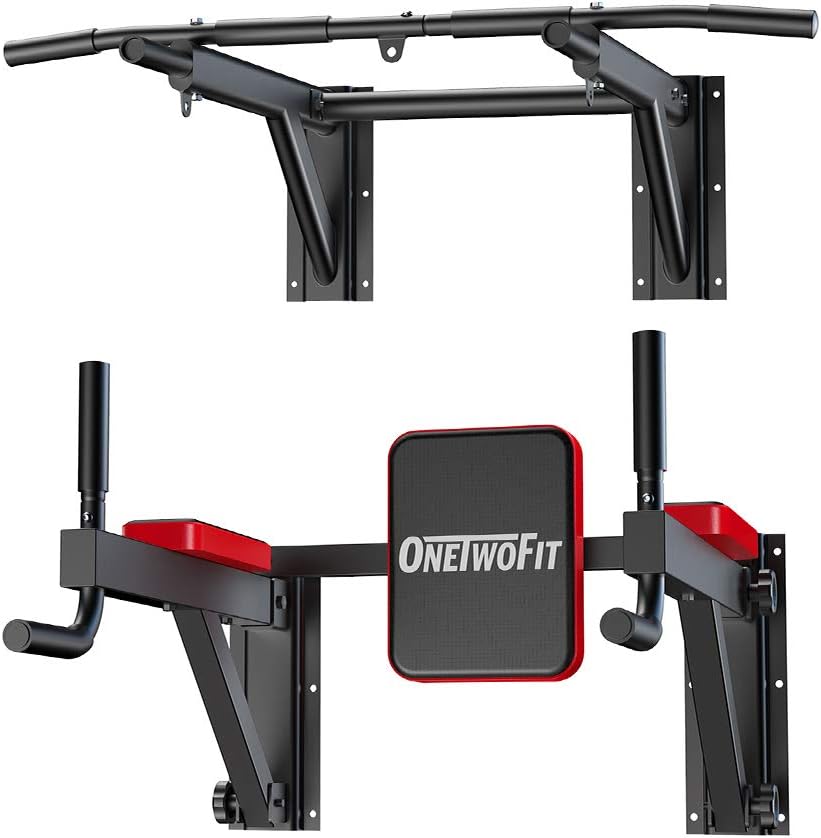
A power rack or cage is an essential piece of equipment for any garage gym. It allows you to perform squats, bench, shoulder, and pull-ups safely. You can also use a power rack or cage for dips to add variety to your workout routine.
A good quality power rack should be adjustable to accommodate heights (from 5’6″ up to 6’8″). It should also have safety bars that prevent injury if someone falls off the platform during an exercise such as bench press or squatting.
You can buy a power rack or cage at most fitness equipment stores. If you’re on a budget, you can build one from scratch using wood and steel. A good place to find these materials is your local hardware store.
7. Pull up the bar
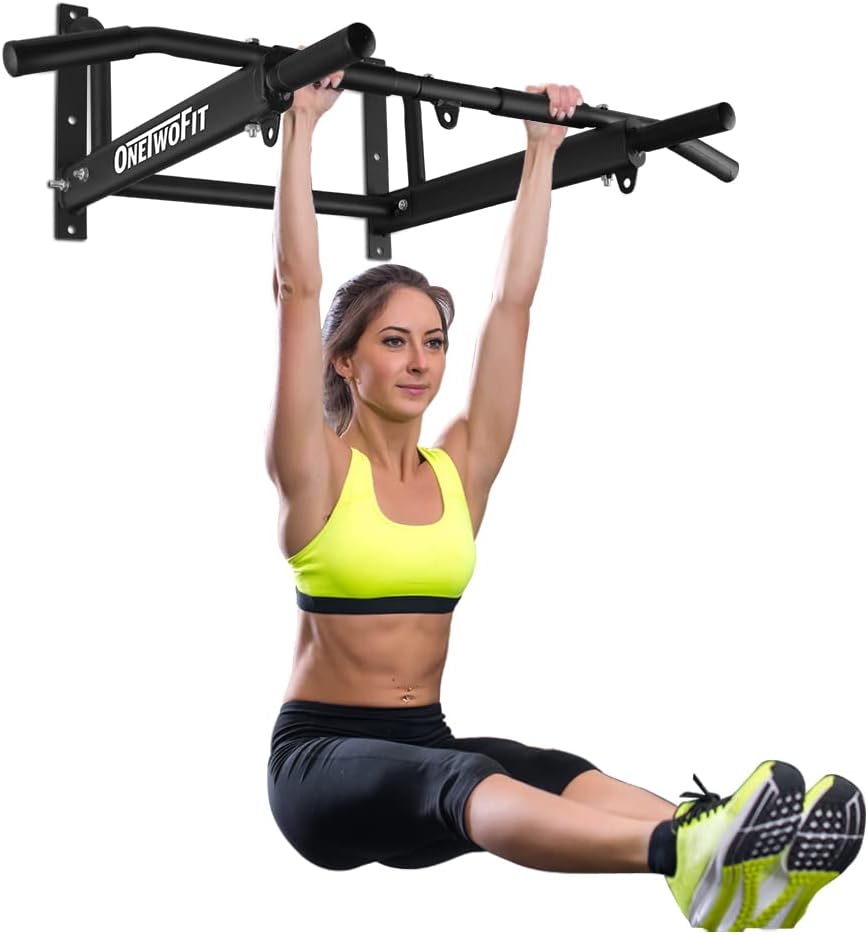
Pull-ups are one of the best exercises to do in your garage gym. They work your back, arms, and core muscles. The pull-up bar can be used for many variations of this exercise targeting different muscle groups.
For example, if you want to focus on your biceps, try doing chin-ups with palms facing away from each other. If you want more emphasis on the triceps, then try inverted rows where your palms face downwards, as shown below:
- Inverted Row: This exercise targets the lats, which are located at the sides of your back near where it connects with the shoulders – an area known as the scapula or shoulder blades; therefore, increasing size here will increase overall width across the chest region, making it appear wider than normal
- Muscle Up: This exercise requires significant strength because there’s no rest between sets, so all energy must come from within yourself rather than external sources such as machines, etc.; however, results will show quickly when done correctly.
8. Weight-lifting gloves

Weight-lifting gloves are an essential piece of equipment you must wear when lifting weights. They help protect your hands and make it easier to grip the bar, preventing injury and making your lifts more effective.
You’ll want to look for gloves that fit snugly but not too tight, with enough space for circulation between the palm and wrist area. A good pair will also provide padding around the knuckles, ensuring they don’t get injured during workouts such as CrossFit or powerlifting, where there’s often banging on bars.
There are many different types of lifting gloves, and it’s up to you to decide which ones are best for your needs. The most common type is the weight-lifting glove, usually made from leather or synthetic materials such as polyurethane. These provide more padding around the palm area and better grip than other gloves. They’re typically used by powerlifters and bodybuilders who lift heavy weights often, such as those in CrossFit.
9. Flat and Incline dumbbell bench
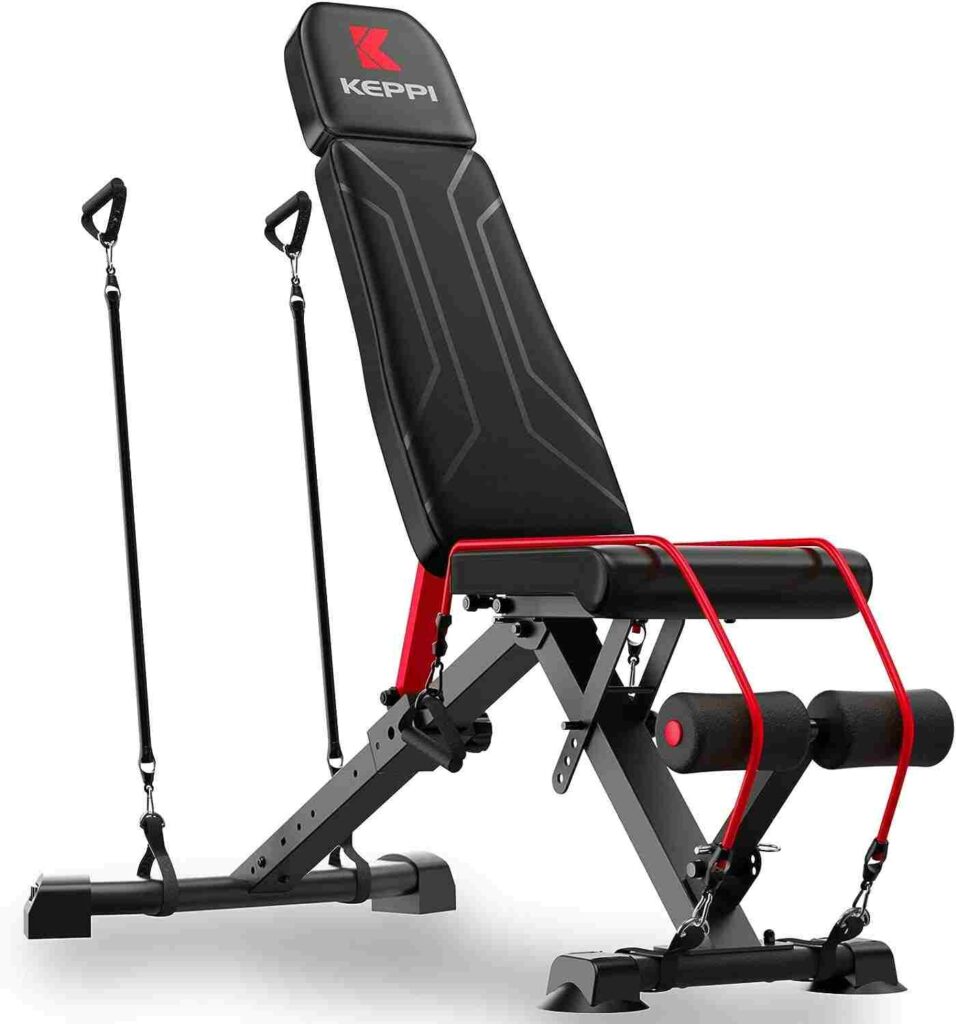
A flat and incline bench is good for the chest, shoulders, and triceps. Do a flat bench first if you want to do chest and triceps.
Using dumbbells or barbells? The answer is still “yes.” You can use either one with this equipment. Dumbbells are more convenient because they’re lighter than a barbell and don’t take up as much space in your garage gym, although some people prefer using a barbell.
How Do I Start a Small Garage Gym?
You can work out in the comfort of your home, save money on gym memberships, and avoid crowds at commercial gyms. This section has a crash guide on getting started with a small garage gym.
1. Assessing Your Space
The first step in setting up your small garage gym is to assess your space. Start by measuring your garage to determine how much space you have to work with. Consider any obstacles, such as support beams, doorways, and windows.
Once you have a clear idea of your available space, create a layout plan for your gym. Consider the placement of equipment, storage solutions, and any other features you want to include.
2. Choosing Your Equipment
When choosing equipment for your garage gym, it’s important to determine your fitness goals. Are you looking to build strength, improve cardiovascular health, or both? Once you have determined your goals, prioritize equipment needs based on what will help you achieve those goals.
Look for high-quality, versatile equipment that can be used for multiple exercises. Some essential equipment includes a power rack, barbell and weights, dumbbells, a pull-up bar, and a cardio machine such as a treadmill or stationary bike.
5. Creating the Atmosphere
Now that you have your equipment, it’s time to create the right atmosphere for your garage gym. Proper lighting is important for safety and to set the mood for your workouts. Consider adding additional lighting or installing bright LED bulbs. Flooring is also an important consideration.
Look for durable, slip-resistant flooring that withstands heavy equipment and foot traffic. Adding mirrors to your gym will make it look larger and help you monitor your form during exercises. Finally, add some décor, such as motivational posters or a sound system, to create an energizing and inspiring atmosphere.
6. Staying Safe
Safety should always be a top priority in your garage gym. Proper ventilation is important for air quality and to prevent overheating. Consider installing a fan or opening windows during your workouts.
Additionally, make sure to have a fire extinguisher on hand in case of emergencies. Always use equipment properly and follow safety guidelines when performing exercises.
7. Maintaining Your Gym
Regular cleaning and maintenance are crucial to keeping your garage gym running smoothly. Wipe down equipment after each use and sweep the floors regularly to prevent the buildup of dust and debris.
Keep your gym organized using storage solutions such as shelving or a tool chest for smaller equipment. Consider upgrading your equipment as necessary and checking for any wear and tear.
What are the Key Considerations When Selecting the Best Weights for a Garage Gym?
With numerous options available in the market, choosing the best weights for your garage gym can be overwhelming.
- Fitness Goals: Before investing in weights for your garage gym, it’s essential to identify your fitness goals. Are you aiming to build strength, increase muscle mass, improve endurance, or enhance overall fitness? Different weight options cater to specific goals. For example, if you’re primarily focused on strength training, barbells and weight plates might be the ideal choice. Alternatively, dumbbells or kettlebells can offer versatility for various exercises.
- Available Space: Consider the available space in your garage gym. If you have limited space, adjustable weights or compact options like dumbbells might be a practical choice. They occupy less space and allow for easy storage. On the other hand, investing in a power rack or a weightlifting platform might be suitable if you have ample space and are planning more extensive workouts.
- Budget: Establishing a budget is crucial when selecting weights for your garage gym. Determine how much you are willing to spend and explore options within that range. It’s important to note that quality should be a priority over quantity. Investing in durable, high-quality weights will ensure longevity and minimize the risk of accidents or equipment failure.
- Weight Increment Options: Consider the weight increment options provided by the equipment. Some weights come with fixed increments, while others offer adjustable options. Adjustable weights, such as dumbbells or weight plates, allow you to increase or decrease the load as needed, providing flexibility for your training progression.
- Quality and Durability: Always prioritize the quality and durability of your selected weights. Look for reputable brands known for producing reliable and sturdy equipment. Check customer reviews and ratings to gauge the durability and longevity of the weights. Investing in high-quality weights ensures safety during workouts and saves you from the hassle of frequent replacements.
- Safety Features: Safety should be a top priority when selecting weights. Ensure your weights have appropriate safety features, such as secure locking mechanisms for adjustable options, non-slip grip surfaces, and sturdy construction. Additionally, consider investing in weightlifting accessories like collars and lifting belts to enhance safety during heavy lifts.
Conclusion
Setting up a garage gym is a fantastic way to bring fitness and convenience to your doorstep. When choosing the best starter equipment for your garage gym, there are a few key factors: versatility, space efficiency, and budget.
Investing in a solid power rack is a wise choice, as it serves as the foundation for many strength-building exercises while ensuring safety and stability.
Pair it with a set of adjustable dumbbells or a versatile kettlebell to add variety to your workouts and target different muscle groups effectively.

